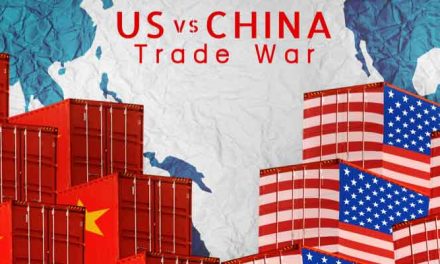As we head into the holiday season, it gives us a chance to pause and reflect on the year behind us.
It’s a time to think about the events that shaped 2018 and how they fit into the big picture going forward.
Just as social and cultural publications nominate their “Person of the Year” and “Sportsman of the Year,” I’d like to propose the first annual “Banyan Hill Market Narrative of the Year.”
The narrative is the main idea that guides how we think about the markets. And how we think about markets is equal to how we invest.
The financial media loves to amplify the prevailing narrative, as it’s a useful tool to explain inexplicable market moves.
Amplifying the narrative also creates a self-reinforcing cycle whereby the narrative causes investors to buy and sell.
You might say the narrative shapes the market, and then the market shapes the narrative.
So, without further adieu, I present to you the first annual “Banyan Hill Market Narrative of the Year.”
Drumroll, please…
Nothing Has Had a Bigger Impact on the Market
The award goes to…
The U.S.-China trade conflict!
(A close runner-up was the path of the Federal Reserve’s interest-rate increases.)
After the S&P 500 Index posted a 21.8% gain in 2017, the Trump tax cut narrative quickly shifted to uncertainty over global trade in January.
China is the U.S.’s largest trading partner, and the closest thing to a “frenemy” (that’s a friend on some things, an enemy on others).
With $636 billion of annual trade at risk, nothing has had a bigger impact on the market in 2018.
For decades, the U.S.-China relationship was largely cooperative.
The Chinese pegged their currency to the dollar to keep it weak. A weak currency kept Chinese goods cheap and Walmart shoppers happy.
China then takes these dollars from sales of Chinese goods to the U.S. and invests in U.S. Treasurys, which, in turn, keeps U.S. interest rates low and shoppers shopping.
But eventually this relationship became as dysfunctional as Whitney and Bobby, or Tina and Ike (for the older generation). That’s because incomes in China rose at the expense of working-class wages in the U.S.
When incomes aren’t rising, consumption is fueled by debt. And for decades, this cheap debt has been provided by Chinese investors.
But as of 2018, this relationship is headed to divorce court.
A Heavyweight Boxing Match
Investors are still clinging to the hope that both parties can compromise on fair terms.
That’s because escalating trade wars and tit-for-tariff battles are eerily reminiscent of the 1930s — a decade that investors would sooner forget.
From the start, the Trump administration’s goal was fairer trade with China and reduced trade deficits.
This would be accomplished through the reduction of Chinese-imposed tariffs with the intention that the Chinese would buy more American goods and sell us less of theirs.
To arrive at this point, the Trump administration imposed and/or raised tariffs on Chinese imports in order to receive desired concessions.
As I wrote back in June, the U.S.-China trade war is likely to go further than most investors expect.
That’s because both sides are in stronger positions than in years past.
China’s export sector no longer drives its gross domestic product (GDP). In 2016, its exports as a percentage of GDP were only 19.6%, according to the World Bank.
That’s down significantly from a high of 37.2% in 2006, meaning tariffs won’t pack the same punch as years past.
On the other hand, U.S. exports account for only about 12% of its GDP, the lowest share of the 35 countries of the Organisation for Economic Co-operation and Development.
We are the opposite of an exporting powerhouse, reliant on cheap imports and a domestic economy for growth.
Additionally, the U.S. economy is growing at the fastest pace since 2005, and could eclipse 3% growth in 2018.
If this were a heavyweight boxing match, you could expect it to go nine rounds, with each side taking heavy pounding.
Signs of a Breakthrough
There was nothing that tipped the market lower in 2018 than the narrative of a U.S.-China trade conflict.
Chinese investors have taken the brunt of this bludgeoning, with the Shanghai Composite Index now down 21.3% on the year.
In the U.S., multiple stock market rally attempts have been reversed. Now the S&P 500 is down over 2% for the year.
Yet signs of a breakthrough in trade talks have recently begun to appear.
On Wednesday, The Wall Street Journal reported that China plans to replace an industrial policy with a new program, promising greater access for foreign companies.
That follows the previous day’s promise to reduce auto tariffs and boost purchases of soybean and other crops.
This news has added almost 3% to the S&P 500 since Monday’s lows, when it looked like the Huawei chief financial officer’s arrest was going to throw trade tensions into a hot furnace.
For now, it seems the trade talks have hit an inflection point.
If the good news on trade concessions continues, perhaps the U.S.-China trade conflict will repeat as 2019’s narrative of the year. But this time as a positive market catalyst.
Regards,

Ian King
Editor, Crypto Profit Trader




